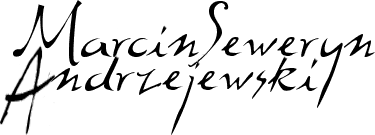Exhibitions

Roadside Scenes I
Roadside Scenes – a metaphorical title associated primarily with observation during a journey. Observation, on the other hand, is irrevocably an element of photography. Five travelers – wanderers, going on a journey into the unknown. Looking around, they register everything that seems interesting to them. Landscapes, people, situations. The peculiar innocence of registration has its great advantages. Its feature is the purity of the photographic image. The presence of all manifestations of life and nature can be proof of a comprehensive understanding of reality. After all, in our lives people, things and events are often mixed together. We are not always able to and, what is more important, we do not always want to sublimate particular areas that emotionally combine for us into a whole, sometimes in a completely surprising way. And that is why we should treat this way of perceiving the chaos of the world with complete understanding, because it is identical with the temperament of people starting their photographic journey, which, I have no doubt, will lead them through the most fascinating nooks and crannies of the world of photography.Wojciech Zawadzki Styczeń 2001, Galeria ARP, Krasiczyn Maj 2001, Mała Galeria GTF, Gorzów Wlkp.
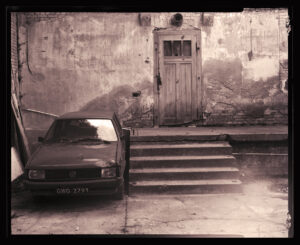
Roadside Scenes II
… it’s actually an energy thing. The energy flowing between “us”. The phenomenon of photography is the energy of light reflected from the “object” and falling “on the photographer” – a human being, living, from the point of view of the cosmos, a fraction of a second and sensitive to the surrounding world. The photographs in this exhibition are a photochemical, aesthetic response to this “hit” of reality. Empty buildings, crumbling farm barns, proving the existence of another time. Dried up, abandoned by last autumn’s leaves, tree branches which, like a theatrical scenery, cover the wall of an old building. Perception of reality “from the side” – in a fraction of a second – the destiny of photography. The PICTURE becomes important. Authentic, existing regardless of the moment of its disclosure. As if not remembering that the reason for its creation concerned a specific place and time. As if objectively existing reality was irrelevant. It didn’t last forever. Photographs do not seem to stop objects “towards eternity”. They don’t “own” them. They allow their existence to flow freely between perception and registration. The photograph seems to leave them in their places, as if they could die peacefully in their own “real” world without leaving a trace. And this, perhaps, makes these photographs unique… After all, seeing does not always mean stopping….Wojciech Zawadzki These are crumbling old warehouses, a shrine forgotten by people hidden somewhere in the forest. But also a decaying, lichen-like street, today and now somewhere in a Polish town. Empty photographs, recording a reality that will soon pass away, will disappear from the face of the earth, swept away by modern architecture. Nobody cares about this world anymore, it’s not worth it, after all, there’s nothing fascinating about watching a dumpster. Marcin Seweryn Andrzejewski’s roadside scenes are photographs of the dustbin of civilization. Consistent documentation of what is old, unnecessary, forgotten, destroyed and still beautiful. But still the most important thing is the image. What was recorded suddenly took on a different meaning, a different meaning. It so happens that even the most trivial object, an ordinary stone, a collapsing wall of a house, noticed and photographed, ceases to be anonymous. It becomes something unique, chosen. The process of artistic sacralization of trivial objects is taking place. The reality, which in a moment will no longer be stopped forever. In a way, photography transfers the photographed object into another dimension, the dimension of the universe. Now the collapsing walls, lonely shrines can go into oblivion, oblivion, non-existence. After all, these objects will exist – with a different life and in a different space. But they will. Maj 2002, Konfrontacje Fotograficzne, Mała Galeria GTF, Gorzów Wlkp Październik 2002, Galeria Browar, Ostrowiec Świętokrzyski Lipiec – Sierpień 2003, Galeria Korytarz, Jelenia Góra Czerwiec 2004 – Galeria Light Zone, Groninge, Holandia Październik 2005 – Galeria ARP, Wrocław
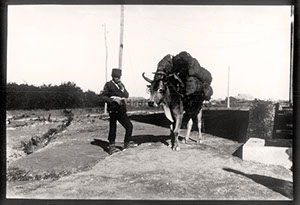
Stanisław Niedzwiecki – Photography
Stanislaw Niedzwiecki – b. May 23, 1890 in Szajkuny, gub. Vilnius. He felt himself in Russian schools. At the court of Tsar Nicholas II, he served as a captain. As a result of the events of 1917, he found himself first in Transcaucasia, then in Persia, where he worked as an archaeologist and photographer. He corresponded with the magazine “Fotograf Polski” published at that time, publishing in it photos from Persia and theoretical treatises on the aesthetics of photography. After World War II, he settled in Jelenia Góra. He died at the age of 87. The collection of photographs and negatives was inherited by Witold Niedzwiecki from Gorzów. The National Museum in Wrocław has a small number of original photographs. The collection of the Gorzów Photographic Society includes a large number of negatives and a few photographs.The exhibition was prepared from badly damaged negatives, mostly glass, by Marcin Andrzejewski, an artist photographer from Drezdenko.The photographs presented at the exhibition were taken in the former northern Persia. Most of these places are located within the borders of present-day Iran.Adam Sobota Adam Sobota: Photography and archaeologyThe photographic archive of Stanisław Niedźwiecki, who died in 1976, has recently become the subject of interest of photography enthusiasts, which led to an exhibition in Jelenia Góra, and may stimulate further research into his output. Niedźwiecki (his surname is sometimes incorrectly given as Niedźwiedzki) came from Wieluń, after World War I he photographed in Persia, and after World War II in the vicinity of Jelenia Góra, where he settled. After his death, the fate of these photographs concerned only his colleagues from the Jelenia Góra Photographic Society, who donated some of the pre-war prints to the National Museum in Wrocław, and the rest (negatives and prints) were entrusted to Witold Niedźwiedzki, a journalist friend of the author, who later moved to Gorzów Wielkopolski. In 1992, he handed over these photographs to the city authorities, who in turn entrusted them to the care of the Gorzów Photographic Society. There are 56 original prints and about 120 negatives, glass (9×12 and 13×18 cm.) and celluloid, from the period before World War II. To this must be added 121 original prints of various formats, which are located in Wrocław, and an undetermined number of negatives and photographs that may have remained in private hands (especially from the post-war period).Two years ago, a hundred of Stanisław Niedźwiecki’s negatives from the time of his stay in Persia were copied by Marcin Andrzejewski, associated with GTF, a graduate of the Higher School of Photography in Jelenia Góra, currently also a member of the ZPAF. Copies were made on barium photographic paper and sepia-toned. The plates were reproduced in their entirety, including the edges, to emphasize the atmosphere of antiquity. In December 2005, Wojciech Zawadzki, the director of the “Korytarz” photographic gallery of the Jelenia Góra Cultural Center, organized an exhibition of these prints at the local Karkonosze Museum. This set also included about 20 original prints by Stanisław Niedźwiecki, which led to a certain confrontation. Marcin Andrzejewski’s copies form a cohesive set in terms of aesthetics, but with all the care for fidelity and quality of reproduction, they create an atmosphere that is to some extent due to the copyist. Of course, it is no longer possible to use the old low-sensitivity papers, which gave a slightly different tonal distribution and a specific gray-brown value; which could be more easily recreated with computer processing, but in turn the printouts would be deprived of the magic of the classic transfer of the image in the darkroom. As a result of this juxtaposition, the exhibition lost some of its uniformity, but the viewers had an opportunity to reflect on what it actually means to get to know old photography today. We rarely have the opportunity to realize what manipulations are used by presenters of archives and how they were originally presented. In addition, today we are often more interested in what was on the margins (literally and figuratively), which the author eliminated in the name of values valued in the past.We know Stanisław Niedźwiecki’s interesting biography partly thanks to the information he provided to his friends in writing and orally, and it would still need to be supplemented and documented, although this data can be treated as very probable. He was born on May 23, 1890 in Szajkuny in the then Vilnius Governorate. He was educated in Russian schools, and before World War I he studied anthropology and ethnography at the University of St. Petersburg. Apparently, he served as a captain at the court of Tsar Nicholas II, and after the revolution in 1917 he found himself in Transcaucasia. During this period, he was even supposed to be in the government of the so-called of the Kazakh Republic, and also began to photograph. From about 1921 to 1935 he stayed in Persia, where he found employment in archaeological expeditions operating there, making a lot of photographic documentation. In 1926 he was commissioned to research and document in Azerbaijan, and in 1931 he was engaged by an American archaeological expedition in Persia. At that time, he maintained correspondence with Polish photographic magazines (Miesięcznik Fotograficzny, Fotograf Polski), sending photographs and comments from Tauris to discuss the technique and aesthetics of photography. At the beginning of 1936 he returned to his homeland, taking photographs along the way in the Middle East, Greece and Turkey. He continued to take pictures in Poland, joining the homeland photography movement initiated by Jan Bułhak. In 1945 he settled in Jelenia Góra, where for 10 years he ran a landscape and artistic photography studio in the Youth Cultural Centre. He was a popular and easily recognizable figure, as he was constantly traveling on a bicycle with a camera, not only in the surrounding areas, but also throughout Poland. During this period, he had 25 individual exhibitions of landscape photography and enjoyed high prestige in the circles of the amateur photo movement and PTTK.The works shown in Jelenia Góra are, of course, a description of exotic areas, important from many points of view, but they inspired me the most to reflect on the relationship between photography and archaeology.It is obvious that the work of an archaeologist, ethnographer or anthropologist requires the preparation of documentation, and since the mid-nineteenth century, scientists have photographed themselves for this purpose or engaged photographers on their expeditions (just as Bronisław Malinowski engaged Stanisław Ignacy Witkiewicz in 1913, who in 1914 returned to Europe to join the Russian army and was then in the same place and position as Stanisław Niedźwiecki). The manner in which a subject or a person should be presented in photographs was at that time regulated more by the norms of artistic culture than by the criteria of specialized documentary. Therefore, Stanisław Niedźwiedzki’s photographs have many features of picturesqueness and mood that have been adopted in painting since Romanticism. Studying such faculties as anthropology and ethnography at that time required the acquisition of photographic skills, and as for Niedźwiecki’s aesthetic views, they could have probably resulted from the general refinement acquired through visits to museums and reading albums, as well as from reading the photographic press disseminating at the beginning of the 20th century aesthetics of pictorialism. Magazines such as the Russian-language “Vestnik Fotograf” and the Polish-language “Fotograf Warszawski” were certainly easily available in St. Petersburg. As I mentioned, in Persia he maintained contacts with Polish photographic magazines since the 1920s, which was probably a consequence of earlier relationships. It is probable, however, that Niedźwiecki came into direct contact with the circle of photographers-artists only after returning to Poland in 1936, for example through his countryman from the Vilnius region, Jan Bułhak.The task of documenting archaeological monuments and works of art is one of the source ideas justifying the presence of photography in culture. This results, for example, from the statement of Francois Arago – promoting Daguerre’s invention in 1839 – who noticed that if Napoleon had had a photograph during his Egyptian campaign, its effects, at least for the knowledge of monuments, would have been more positive. Another pioneer of photography, Fox Talbot, who was also an amateur archaeologist, pointed to the usefulness of photography in identifying and comparing finds, and devoted two tables to this problem in his 1844 book The Pencil of Nature. At first, they were considered in connection with the issue of documenting archaeological objects and masterpieces of art, regardless of whether someone wanted to limit photography in its ambitions or not. Already in the mid-nineteenth century, this issue was practically analyzed in their photographic documentations of cultural objects, e.g. the Alinari brothers in Italy, Karol Beyer in Warsaw, Ludwik Bielitski in Legnica, and Hermann Krone in Dresden (born in Wrocław).Archeology is a name based on the Greek word “arche”, meaning the basic principle, the primordial thing. The phenomenon of photography has a lot in common with this concept in various aspects. After all, photography refers to a direct, basic way of perceiving (the analogy of a camera with an eye), and we attribute to it the ability to directly record the objective factor of time. So, regardless of what it represents, a photograph is itself an archaeological object, and in order to study the past, we can collect photographs, just like pottery, weapons or manuscripts. This was perfectly emphasized in the second half of the 20th century by Jerzy Lewczyński in his artistic and collecting activities called “the archaeology of photography”. The “Archaeologist of Photography” is interested not only in objects that were once in the field of view of the camera, but also in the ways and motives of other people’s perception of these objects, and all the unique features of this moment in history in which photography is created. Someone who photographs simply thinking about objects important to a certain branch of science may not think about other properties of photography. But someone who takes them into account will express it through the aesthetic aspects of photography, in a way appropriate to the current artistic consciousness.Stanisław Niedźwiecki, as I have already stated, took care to give his photographs clear aesthetic values, i.e. he tried to ensure that photography – as an image of archaeological and ethnographic objects – also expressed the values of its own “arche” in many ways. However, the way it is expressed is never something unambiguous. Each photographer determines the essence of the current time according to his own needs and possibilities. Art historians recognize that in the 1920s, the most modern understanding of the essence of photography consisted in isolating the viewed object, in a surprising way of capturing it, in maximum contour precision, contrast and creating analogies between nature and modern technology. In Stanisław Niedźwiecki’s photographs, we will not notice such features being emphasized. The author prefers a more traditional way of seeing, directly associated with the Romantic concept of the picturesque. In his works, we usually see scenes with quite extensive plans, where objects, architecture or people are integrated with the landscape, which by default goes far beyond the frame of the picture. The author does not look for “arche” in abstracted elements of matter, but sees the source principles rather in the stability of the relationship between people and nature and in the traditional relationships between them. The ruins or excavations described by the camera remind us of the impermanence and changeability of cultures and things, but this imperative of transience has something of the rhythm of nature, where time is associated rather with repetition than with civilizational progression. The local people represent the culture that appears to the European visitor in various types of archaicity that are found in and above the earth. This impression is not changed by rare inclusions in the form of products of Western modernity.Stanisław Niedźwiedzki gave his last exhibition (in 1973) the title “Exoticism and Romanticism in Photography”, which confirms the impressions described above. Romance is associated with with expressing the feeling of a certain emotional unity with what is distant and limitless (the
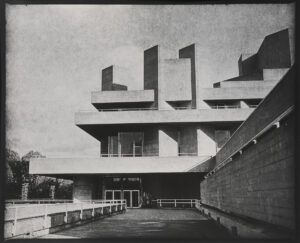
Shangri La
In defining the modern metropolis known as the Shangri-La, Marcin Andrzejewski provokes. Encouraged to reject the mundane meanings, which filled in the daily hustle and bustle of the concrete beast. Shangri-La is the world of literary non-existent. “The land of the harmony and wisdom” which is so urgently needed. If the art would mean nothing but emotional triggers, the land of imagination, the agreement will remain an intimate space with the viewer. We understand it, each individual, the ability to experience life, but the overriding feature is that the boundaries of the land rover in excess of Shangri-La, was banned from leaving. This is the provocation – the superiority of the image over literature, as well as the ephemeral life. Who will feel the taste of photography, to leave this magical land will not have the slightest need.Cezary Tymczuk Maj 2010, Mała Galeria GTF, Konfrontacje Fotograficzne 2010, Gorzów Wlkp Październik 2011, Fotoart, Szczecin Wrzesień 2012, Aleppo 11th Inernational Photo Festival, Aleppo, Syria

Hell’s Kitchen
“Hell’s Kitchen” is – it would seem – quite an inexpensive name for a photographic exhibition. However, just after crossing the threshold of Marcin Andrzejewski’s atelier, one of the basic attributes of the kitchen is the nostrils: a bouquet of intense scents. This is not the scent of the food being prepared, but a mixture of alcohol, ether, and other chemicals that are unidentifiable for an inoperable nose.After a while we get used to the diabolic scent and start to look at vegetables and fruits – the silent heroes of the show. Impersonation is not an accident here – what is usually regarded as food, here transforms into theatrical actors in new role models. We see their variety, the dynamics of the facial expressions of their structure, and on the stage they show a new look at the kitchen, while offering a perspective of tasty dishes. Cooking and Photography – says Andrzejewski – is my life. And it is the passion of finding a common denominator for both of these areas to feel most strongly in the set of images that we see in the “Hell’s Kitchen.”The characteristic aroma mix accompanying the exhibition is not a case in point. It binds directly to ambrotype, the technique used to create these tasty images. It has been used since the 1850s, but today it is used by a few photographers. This technique requires discipline, patience and a lot of work, but the process itself is fascinating. In the beginning, the glass plate is trimmed to form a collodion layer and sensitized with silver nitrate, and the photographer takes about 10 minutes to take and produce a photograph. This is an exciting moment as there is no guarantee that the picture will rise. However, if it succeeds, the creator obtains a completely unique work and great satisfaction. Just like experimenting in the kitchen.Ambrotype, like the art of cooking, is very demanding. In one image we have both negative and positive. It is important to focus attention on details, focus and keep in mind the chemical process … That is why displaying the “Devil’s Kitchen” is a gesture similar to administering a complicated meal. An important role, as well as when serving dishes, its development and presentation.At the moment 300 images per hour is no feat. However, Andrzejewski slows down, stops in front of the object to celebrate and tastefully touch, touching all senses.Marek Poźniak Czerwiec 2017, Mała Galeria GTF, Gorzów Wlkp Maj 2019, Galeria Korytarz, Jelenia Góra
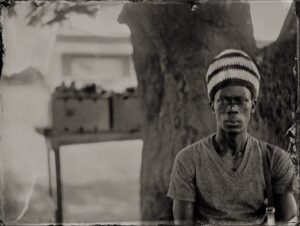
1120km, Gambia River
Today, April 1, 2019, a lot of travel photos were taken, and this day is no different in this respect from any other during the year. These photos will flood social media, some of them will be lost forever on computers, and others, after careful processing, will be published in travel magazines. And about 167 years ago, traveling photography was so difficult and required so much knowledge and patience that it was rare. Difficult to imagine from the point of view of today’s globetrotter.It was an incredible pleasure to show an alien world by photographers who traveled around exotic countries with the new technology invented and developed by Frederick Scott Archer in the 1850s. The hunger for images from this part of the world has increased the frequency of middle class trips to African countries. High temperature was not an obstacle, the first photographers bravely traveled along the Nile by ship, with their own darkroom and sometimes a hen, used to obtain protein for albumin prints.Marcin Andrzejewski also had to struggle with high temperatures and hard-to-reach places, traveling along the Gambia River. Today, the technology is so developed that some of the hardships of the first travelers – photographers can be overcome. However, then as now, traveling is primarily about meeting people, talking to them, watching what they do. The places where the locals live are very different for us and this is invariably interesting for generations of photographers who wonder how to present what they see and experience so that it is closest to the truth. Marcin decided to shoot slowly, in the style of the pioneers of travel photography, using the wet collodion technique. He chose this strenuous path so as not to steal in fractions of a second what takes place in front of the lens for a long time. His fascination with The Gambia, as well as mine, is the willingness to take your time to absorb what is happening at the pace of its inhabitants. In The Gambia we will meet 12 different tribes, each of them has an unusual and intricate past, and the present does not spare them traps and disappointments. All this translates into images that show different parts of this beautiful country, not necessarily matching at first glance, but in their entirety they create a story that we are unable to see in the tourist tumult. We rarely meet people in the photographs, but the ones we see were met by the author and told about himself and his project. These are conscious creations in front of the lens. These photos are very different from those from the mid-nineteenth century. The faces of the people in the old photos are sad, usually the protagonists have been forced to pose. Perhaps photography was so foreign to them that they were afraid of its unknown, spiritual dimension. Nowadays, in the era of selfies, there is no such atmosphere of uncertainty, there is fun, cooperation and mutual trust.Andrzejewski does not travel like most contemporary tourists in an air-conditioned bus, but just like everyone else, he protects himself from the scorching rays of the African sun in various improvised ways, sweating, but smiling because he participates in the daily celebration of Gambian life. It works like in 1870 Alfred Noack, whose old photographs of the landscape with staffage became a model for many years to immortalize places. It is a very strong reference to the tradition of photography, even a form of homage to the achievements of the pioneers of photography. In the photos, we can see important places by the water for the Gambians, their beautiful boats, which they use to catch fish. Farmers and animals that are meticulously guarded, like family members, and people are happy to sing and dance. I believe that Marcin Andrzejewski will be able to create an unforgettable and unique image of The Gambia, which will reflect the uniqueness of this African country.Marek Poźniak Czerwiec 2019 – Mała Galeria GTF

Wet Plate Collodion Portraits
The wet collodion technique, invented in 1851 by the English sculptor Frederik Scott Archer, also called the wet collodion plate, is one of the first photographic techniques invented and the first technique to obtain a glass negative that could be easily reproduced (which contributed to the popularization of photography in nineteenth century). This method, compared to other photographic techniques, is unique – each photograph is subjected to individual processing, it is characterized by exceptional image vividness.It is a technique used mainly in portrait photography, but often also in landscape photography.In this process, the photographer independently, manually prepares the photosensitive material: a glass plate or other substrate (e.g. blackened iron plate, black plexiglass) after thorough cleaning (we use here surface-active or absorption methods or both) is covered with iodized collodion (a mixture of collodion cotton with alcohol, ether and iodine salts) and then, after the top collodion layer has hardened, the plate is immersed in a silver nitrate solution, as a result of which the collodion layer is sensitized. The prepared plate should be placed in a large-format camera and a picture taken.Contrary to popular photographic materials, in the wet collodion, the photo is developed by pouring the developer solution on the plate, holding the plate in hand.rocking the plate while trying to keep the developer on the surface of the plate. The latter is so important that along with coincidenceWith the developer flowing off the plate, we lose part of the silver contained in the emulsion, and thus the image density is lost. With a properly exposed plate, the image should start to appear in bright parts after about 2-5 seconds, halftones will appear after 5-10 seconds of developing, and when shadows start to appear, we should start interrupting the development process. We stop by pouring water on the inclined plate. At first the surface of the plate will appear oily and the water will run off unevenly, but when the development process is completely stopped, the water will run continuously over the plate. Naturally, we perform calling and interrupting under safe lighting.After developing, transfer the disc to the fixer. We can do it in daylight, because after properly interrupting the developmentthe plate is no longer sensitive to light. We keep it in the fixer, stirring it from time to time, until all visible unexposed silver salts are dissolved.The workshop was held under the supervision of a photographer, a member of ZPAF and GTF, Marcin Andrzejewski, who has been living in London for 15 years, who also provided a large-format camera with a special cassette for 18x24cm glass films and English chemical reagents of good quality.The workshop was attended by 8 members of the GTF, willing sympathizers of the Society were portrayed. Wrzesień 2020, Mała Galeria GTF, Gorzów Wlkp

Instagra
Traveling means being on the road. This knowledge is even more ingrained in our heads since the pandemic was declared: Traveling makes existential sense. Marcin Andrzejewski’s photographic journey deals with this subject in a unique way and takes us to places that are important to him from the point of view of cultural history or subjective experiences. I am looking at these photos and I want to immediately share with my fellow travelers – what life is like – not only what I see, but ask them if it is a joke or a provocation? Nevertheless, with the point of view – personal – it is difficult to argue, it gives us something special – our own sensitivity. We gain a lot, because in addition to the world of ideas, the points of view, experiences and biographies of other travelers, in our case also of the photographer, are also very inspiring – which intensifies the role of the image.Marcin creates beautiful photographic projects, documenting Africa in recent years; he is looking for the end of the restrictions and opening the way to the continuation of the wonderful, b-w photography in the wet collodion technique.Traveling doesn’t just take place in the field. The second same place is our own head. After all, these are memories that we keep within ourselves.Memory encompasses not only the visible, but also perhaps most of all, what is hidden and that arises in contacts with people encountered along the way. The new exhibition by Marcin Andrzejewski is a reference to new technologies, both in the area of image recording and its dissemination. He used a smart phone for shooting and made the photos public on the Instagram internet platform.Does it stick with historical photography on glass plates, of which Marcin is a master. Well no. After all, we are still dealing with wonderful cadres that they take and take us on an intellectual journey. We can compare what Marcin suggested with our experiences. It is discovering new areas of the world that are hidden for many of us.Photographing with passion, seriously and at the same time with pleasure – it is best to do it in the form of a dialogue, in exchange with other arguments, on the basis of good, original visual material. The photographs of Marcin Andrzejewski are perfect for this. They are – in their form – universal. Thanks to their “literary” form, we are already in the middle of events.Marek Poźniak Maj 2022 – Mała Galeria GTF, Konfrontacje Fotograficzne 2022
